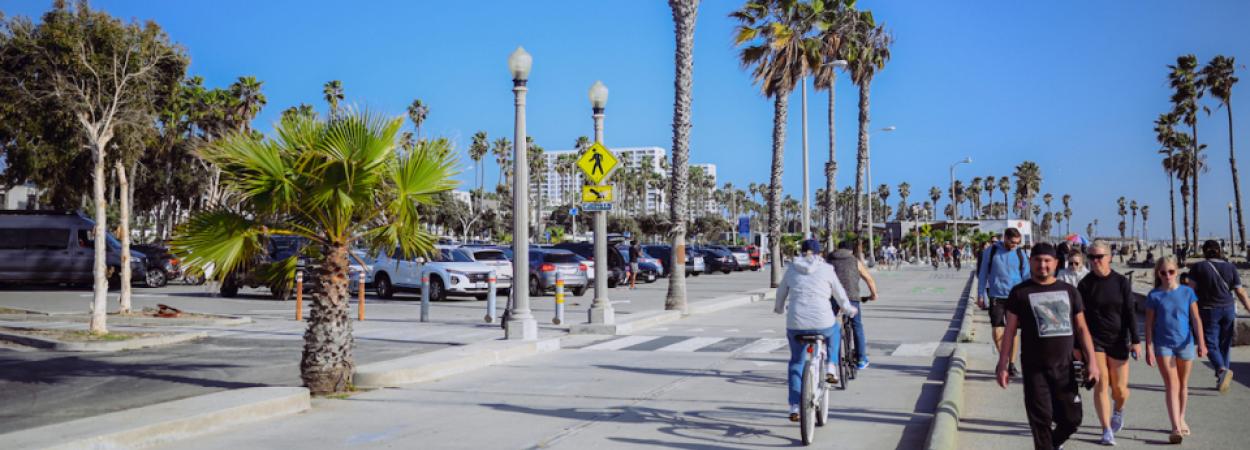Knowing how many people use walking and bicycling infrastructure is crucial for transportation planning. Active transportation projects can help cities and states achieve multiple climate- and public-health-related targets, and a new project launching in 2024 can help further those goals: California is getting a statewide active transportation count database.
With help from Portland State University (PSU) researcher Sirisha Kothuri, the Safe Transportation Research and Education Center (SafeTREC) at the University of California, Berkeley is leading an effort to create a centralized data repository for the state.
Kothuri, a senior research associate in civil and environmental engineering at PSU, has led multiple research projects aimed at improving the accuracy and scope of nonmotorized data collection efforts. She has experience with using data fusion techniques to estimate bicycle volumes, leveraging crowdsourced data to derive pedestrian counts, and working with this data to make walking and bicycling safer and more comfortable. Her expertise in this area, as well as PSU's experience centralizing transportation data via the university's PORTAL and BikePed Portal, will be valuable for SafeTREC researchers as they work to combine and consolidate California's active transportation data.
WHY CREATE A CENTRALIZED DATA REPOSITORY?
As Caltrans, or the California Department of Transportation, moves to prioritize active transportation modes, access to pedestrian and bicyclist counts has become increasingly important. Volume data can be used by planners to evaluate demand for nonmotorized infrastructure, and by engineers to improve safety.
Agencies throughout the state already count pedestrians and bicyclists, but these data are often stored on agency servers or in proprietary data systems. The Active Transportation Database, originally developed by the Southern California Association of Governments (SCAG), currently serves as a clearinghouse of counts for communities within SCAG’s region. Caltrans is seeking to build upon this existing resource by expanding the scope to the entire state and adding improved functionality.
WHAT WILL THIS PROJECT DO?
Led by SafeTREC Director Julia Griswold, the research team will conduct engagement with agency stakeholders to understand how the database enhancements can meet their needs. They'll also collect existing data from throughout the state to populate the clearinghouse; review existing methodologies for count data collection and processing; and develop guidance for best practices. Once the database has been created, the team will train transportation professionals around the state on how to use it effectively.
The project's goals are:
- Improve active transportation data collection by setting statewide methodologies for counting and storing volumes of active transportation users.
- Establish a statewide active transportation count data clearinghouse through an open-source database, and make all validated data available to the general public.
- Ensure long-term viability of the database, including processes to safeguard the collected data and conduct routine maintenance and upgrades as available tools and technology advance over time.
- Streamline the ongoing and future data collection efforts across California.
The researchers also plan to enhance the database's functionalities, including improved data analysis capabilities. This project stands to improve access to data and powerful decision-making tools for California's transportation professionals and organizations. By doing so, the researchers will help provide Californians with access to better biking and walking options.
Photo by Alina Vasylieva/iStock
Portland State University's Transportation Research and Education Center (TREC) is home to the U.S. DOT funded National Institute for Transportation and Communities (NITC), the Initiative for Bicycle and Pedestrian Innovation (IBPI), PORTAL, BikePed Portal and other transportation grants and programs. We produce impactful research and tools for transportation decision makers, expand the diversity and capacity of the workforce, and engage students and professionals through education and participation in research. To get updates about what's going on at TREC, sign up for our monthly newsletter or follow us on social media.




